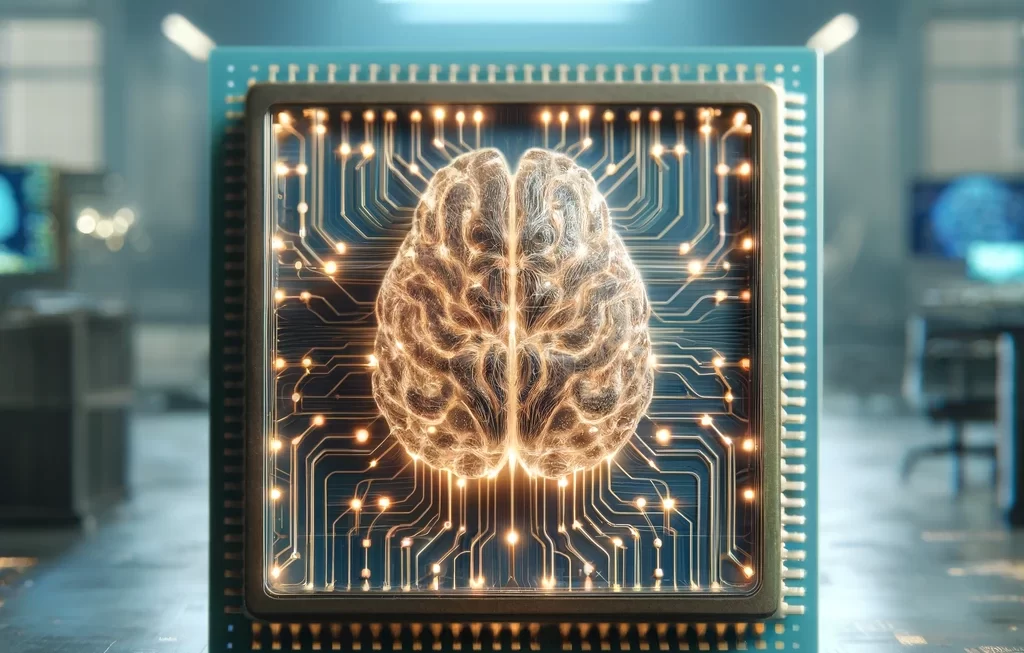Neuromorphic computing is an emerging field in technology that seeks to replicate the efficiency and architecture of the human brain. This innovative approach has the potential to revolutionize how computers process information, offering significant advancements in various applications. This article aims to simplify the concept of neuromorphic computing for beginners and provide references for further exploration.
What is Neuromorphic Computing?
Neuromorphic computing involves creating computer systems that mimic the brain’s structure and function. Traditional computers operate based on the von Neumann architecture, where memory and processing are separate, and data flows sequentially. In contrast, neuromorphic systems integrate memory, processing, and communication into networks of artificial neurons, closely resembling the human brain’s neural networks.
Inspiration from the Human Brain
The human brain excels in tasks such as pattern recognition, learning, and perception, all while consuming minimal energy. Neuromorphic computing strives to emulate these capabilities using several brain-inspired strategies:
- Neural Networks: Artificial neural networks (ANNs) in neuromorphic systems replicate the brain’s network of neurons and synapses, enabling the system to learn from data.
- Spiking Neural Networks (SNNs): SNNs go a step further by simulating the timing of ‘spikes’ or electrical impulses in biological neurons, which can lead to greater efficiency and lower power consumption.
- Learning and Plasticity: Neuromorphic chips are designed to learn and adapt from the data they process, much like the brain’s ability to learn from experiences (plasticity).
Applications of Neuromorphic Computing
Neuromorphic computing has the potential to impact various fields significantly:
- Robotics: Enhancing robots’ ability to interact with their environments in more natural and efficient ways.
- Internet of Things (IoT): Enabling smarter, more autonomous devices capable of performing complex tasks with minimal energy.
- Medical Devices: Improving devices such as prosthetics and implants, allowing better interaction with biological systems.
- Artificial Intelligence (AI): Making AI systems more efficient, particularly in areas requiring rapid, real-time data processing.
Challenges in Neuromorphic Computing
Despite its promise, neuromorphic computing faces several challenges:
- Complexity: Accurately replicating the brain’s functions in a computer system is extremely complex.
- Scalability: While prototypes are promising, scaling neuromorphic systems for widespread commercial use remains a challenge.
- Technological Limitations: The current technology for creating and integrating neuromorphic systems is still in the developmental stage.
Further Reading and Resources
For those interested in delving deeper into neuromorphic computing, here are some recommended resources:
- Books:
- Neuromorphic Photonics by T. Ferreira de Lima et al. — explores the intersection of photonics and neuromorphic computing.
- Principles of Neuromorphic Engineering by S. Liu and T. Delbruck — provides a foundational understanding of the principles behind neuromorphic engineering.
- Journals:
- Frontiers in Neuroscience — frequently publishes articles on neuromorphic systems and their biological inspirations.
- IEEE Transactions on Neural Networks and Learning Systems — offers articles on the latest research in neural network technologies and their applications.
- Online Courses:
- Coursera and edX often have courses on neural networks and neuromorphic computing, providing both introductory and advanced insights into the field.
Conclusion
Neuromorphic computing is a cutting-edge field aiming to create more powerful, efficient, and intelligent computing systems by emulating the human brain’s capabilities. Although still largely experimental, its potential applications in robotics, IoT, medical devices, and AI are vast. With ongoing research and development, neuromorphic computing could significantly advance how we process information and interact with technology.




